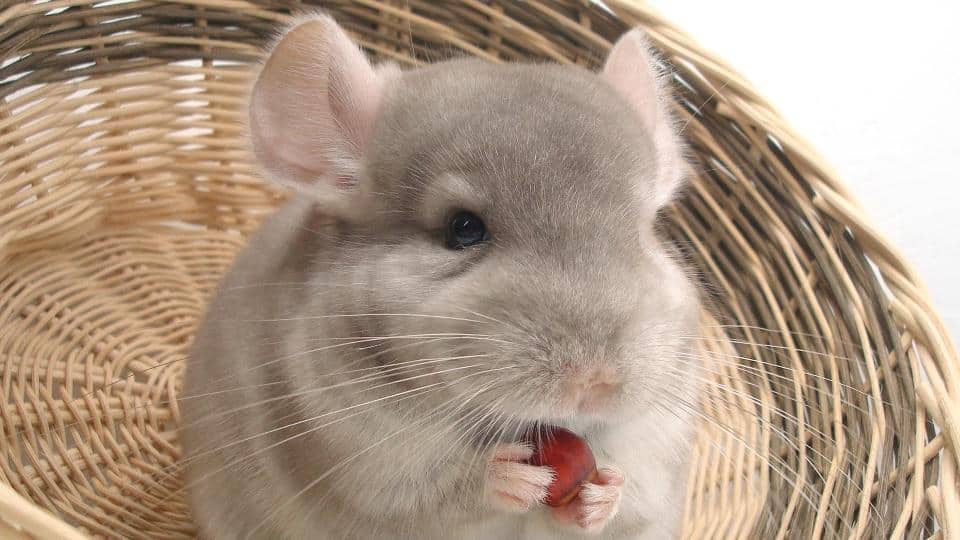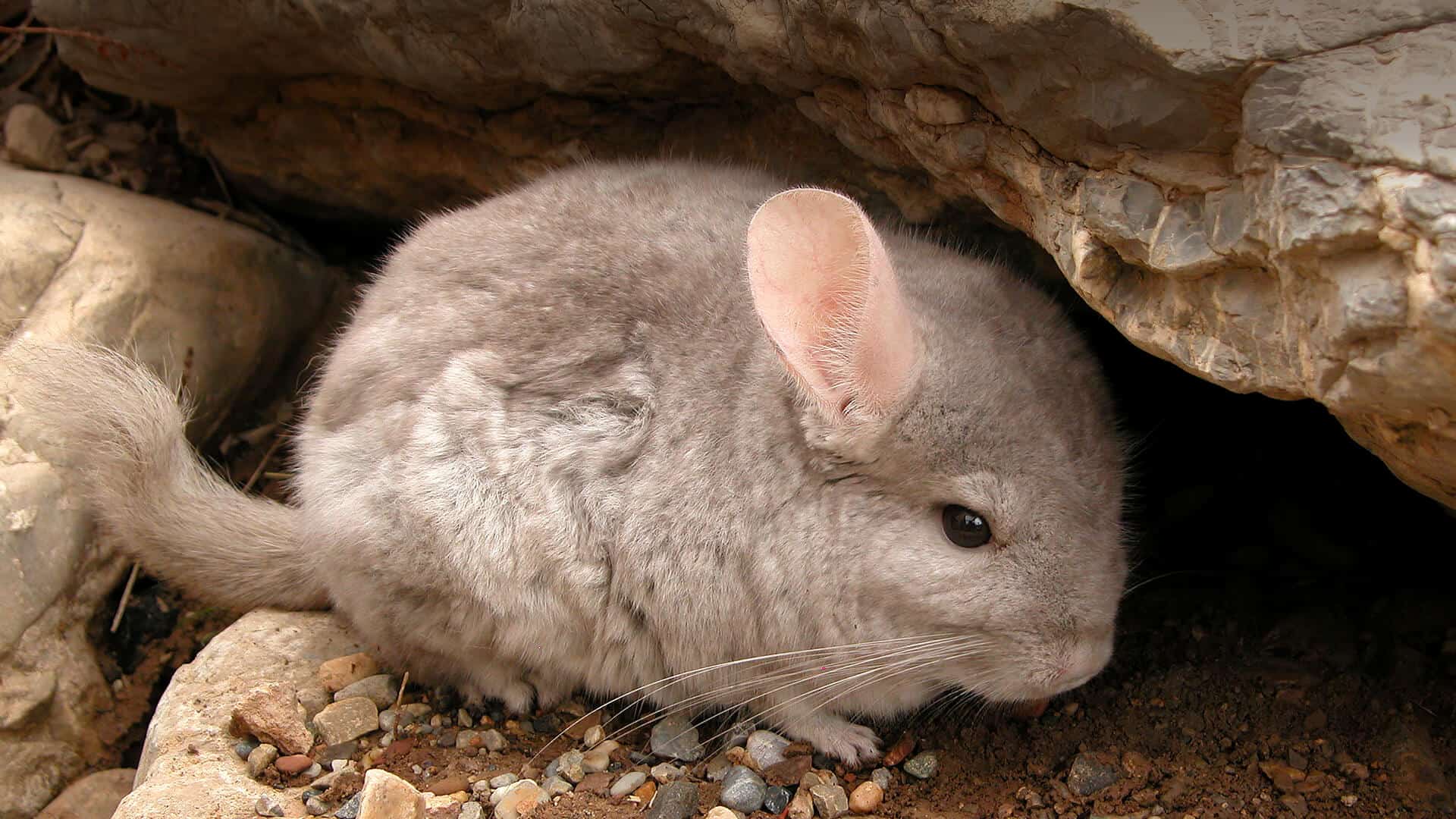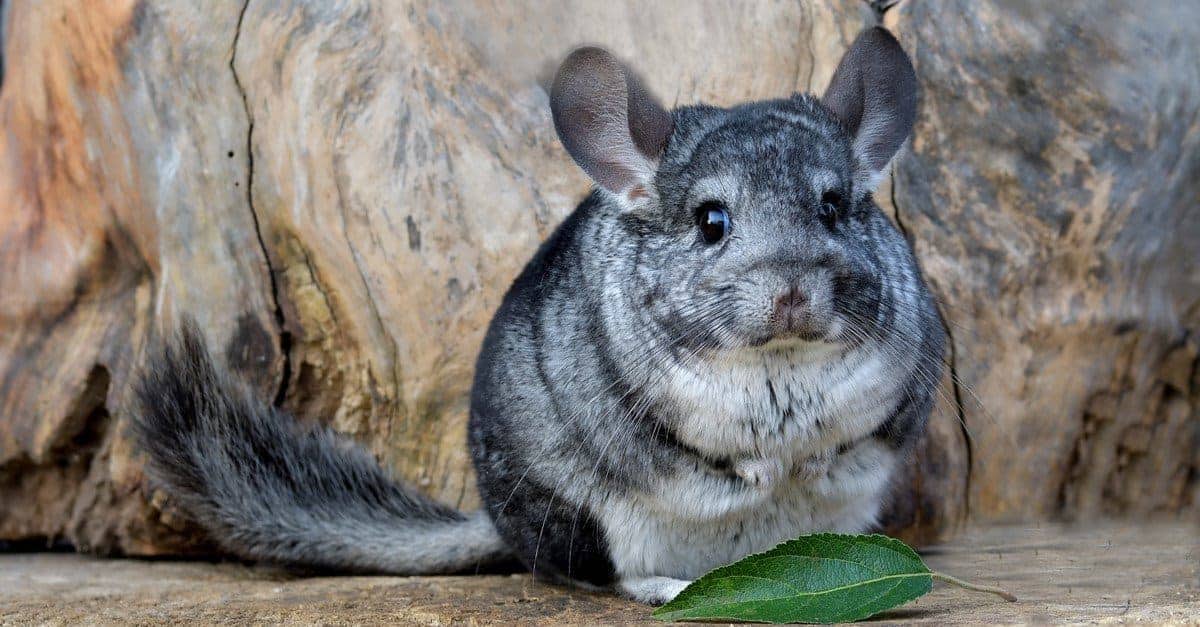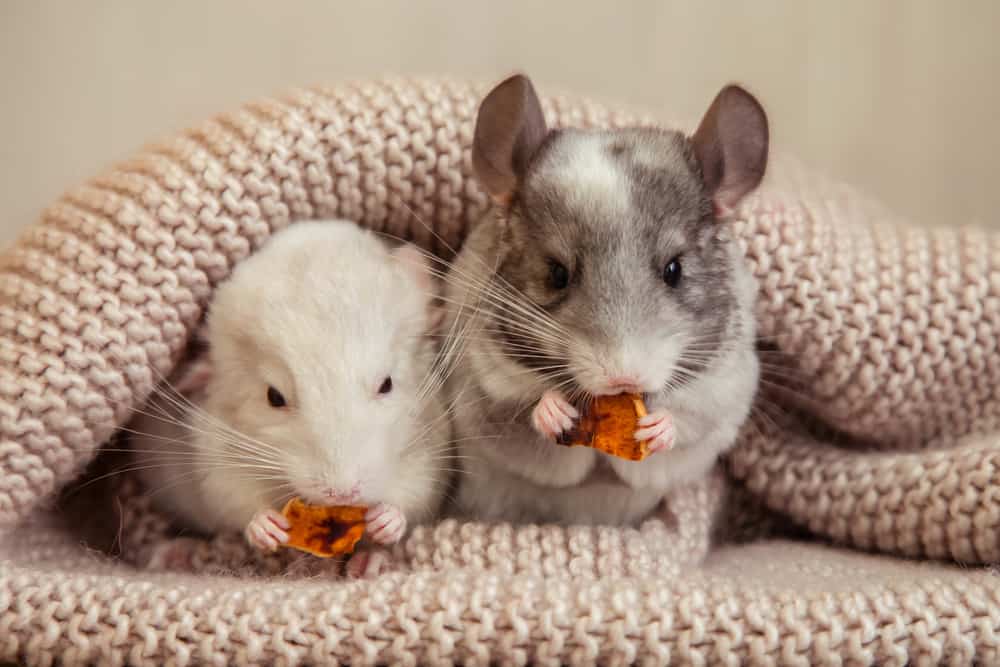When it comes to talking about tender and fluffy, it is impossible not to mention the chinchillas. This little animal is enchanting and capable of giving a nice and comfortable company. However, there is so much more to talk about the chinchillas than just their cuteness; these can be fascinating animals or even pets; therefore, we will now talk more about these rodents.
Physical Characteristics of the Chinchillas

The chinchilla is a mammal rodent with a physical appearance similar to bunnies. However, the females tend to be bigger than males, whose head and body may vary in length, ranging from 11 to 23 inches and weighing from 1 to 20 pounds.
Its fur is characterized by being soft and uniform, whose color tendency is usually between three main colors, which can be: brown, grey, and beige. Every species has furry tails, and it is noteworthy that they can grow in a chinchilla hair follicle, up to 60 hairs.
In addition, chinchillas have large and broad heads and necks; their feet and hind legs are large and strong.
Chinchilla’s Nature
Chinchillas live in colonial groups called “herds” that are home to more than 100 chinchillas. These rodents are nocturnal animals that divide into two species: The Chinchilla Lanigera (long-tailed chinchilla) and the Chinchilla Brevicaudata (short-tailed chinchilla).
Depending on their native environment, some chinchillas are capable of jumping or digging effective burrows. Although its forelegs tend to be shorter than its hind legs, they are dextrous and valuable for handling food. Likewise, in mating season, Chinchillas reach reproductive age at about eight months, and this is carried out seasonally and according to the light cycle.
In the same manner, unlike other rodents, male chinchillas stay to take care of their offspring when it is necessary; now, in case a female cannot breastfeed its calves, another female chinchilla can save and breastfeed the calves.
Distribution, Habitat, and Average Life Span of the Chinchillas
The natural habitat of the chinchillas is located in the mountains in northern Chile. Their preferred zones are rocky and mountain areas between 9.800 to 16.400 feet in height. The chinchillas like to nest in cracks and holes found inside rocks.
Living in the hard mountains of South America, chinchillas have managed to develop a dense fur that protects them against the elements. Their average life span in nature is about 8 years of life. On the other hand, when it is about chinchillas in captivity, these can have the hope for a life span of up to 20 years.
Why? Mainly because in captivity, they are not exposed to their natural predators like the fox and birds, which are very different from the captive chinchillas, who are or should be treated with great care.
What Do Wild Chinchillas Eat?

Their diet is pretty similar to rabbits and guinea pigs, so if you used to have these pets, you might have some knowledge of what is good for them and not. Chinchillas are herbivorous animals, so for the most part, their diet consists of vegetation food; however, their diet may vary depending on whether they are:
Wild chinchillas
In their natural habitat, chinchillas can be omnivores, so they can depend on plants and meat for survival. But wild chinchillas’ diet is conformed mostly by hay and seeds since chinchillas require a lot of fiber in their diet.
In the same manner, herbs and plant leaves are complemented with roots, lichens, mosses, branches, and tree bark. These “woody” foods help chinchillas grind their teeth and their digestive system function properly.
In the case of nuts and seeds, these are foods that supply the chinchillas with fats and sugars necessary to balance their diet. Likewise, although it is not very common, wild chinchillas may eat berries and flowers; among the aforementioned, we can find leafy and moisturizing flowers, like the aloe vera and cacti.
On the other hand, chinchillas can also be opportunity eaters, so some of them have been seen to eat different types of insects and bird eggs.
Chinchillas in Captivity
Chinchillas in captivity tend to have a more healthy diet according to their organism. Their diet is conformed mostly of hay, seeds, dried fruits, and chinchilla food that can find in pet stores. The first is mentioned because they need lots of fiber in their diet, and the second is mentioned because it is a food low in sugar, and the granules are capable of supplying nutrients and minerals adequately to your pet.
Furthermore, chinchillas in captivity also usually tend to eat oats, wheat, alfalfa, corn, and dried vegetables in moderation. In addition, some give them treats in the form of fresh fruits and vegetables, such as kale, lettuce, and parsley, among others.
Baby Chinchillas
At birth, baby chinchillas enjoy an essential diet of their mom’s milk. Although they can gnaw on food within a few hours of birth, they must wait two months before giving up their mother’s milk diet. Afterward, the young chinchilla enjoys the typical diet of adult chinchillas, composed of grass, plants, and some insects and eggs as the main dish.
What Not to Feed to the Chinchillas?
Chinchillas have a sensitive stomach; therefore, you must be careful with the diet you establish. In this manner, food sources rich in sugar have to be avoided at all costs because they can cause digestive problems and, in worse cases, death; this can be harsh because chinchillas like treats and desserts, but these should only be given on rare occasions, as they can also cause damage to their teeth.
Some foods, in particular, are expressly forbidden to chinchillas, like avocados, cabbage, sunflower seeds, spinach, broccoli, corn, and others.
In the same way, do not overfeed the chinchilla with pellets, as this type of food does not supply the necessary amount of fiber for the correct functioning of its gastrointestinal tract. Also, be sure to regulate the amount of protein and calcium you provide to your chinchilla; too much can lead to many health issues.
Tips On Feeding Chinchillas

- Chinchillas in nature eat early in the morning and in the evening; therefore, you should not overcrowd them with too much food because not only do they eat slowly, but you will also generate health problems.
- Chinchillas are animals quite dependent on hydration; they may die if they are not well hydrated. So make sure to keep their water container filled in its cage.
- Provide them with quality hay for good nutrition and replace it regularly so that mold does not form, as it can make your pet chinchilla sick. A high fiber diet is a total must for them, which is why different kinds of hay are recommended for their diet, like timothy hay, grass hay, and alfalfa hay, oat hay, to mention a few. They cannot depend on hay alone though.
- Chinchillas cannot be subjected to sudden changes in their diet due to their weak stomach, so avoid sudden changes in their diet.
- Keep a close eye on what your chinchilla is eating and defecating. The primary cause of death for chinchillas is to stop eating, so be aware of what kind of food they are putting aside and whether they are defecating enough. Anything out of the ordinary in your chinchilla’s poop is a good reason for a quick visit to the vet.
- Avoid giving your chinchilla seeds and nuts in excess, so you will take care that your body is not filled with unhealthy sugars.
- Chinchillas are coprophagous, meaning they can eat their own poop because they get some additional nutrients from it, so let her do it when you see it.
In Conclusion
Chinchillas are beautiful animals and great companions. But sadly, due to their fur and market demand, they are in danger of extinction; for this reason, it is important that, if you have a pet chinchilla, you take care of it diligently because it is a very valuable animal.
The market offers a variety of balanced nutritional diets for your pet chinchilla, so take the time to double-check the diet you plan to provide. Also, do not forget to consult your veterinarian about the different foods you plan to offer. So this way, you will avoid health problems with your chinchilla pet.
F.A.Q
Do Chinchillas Like to Be Held In Arms?
Chinchillas are solitary animals in captivity. They may bite if they feel frightened, so carrying them does not seem to be a very appropriate act. However, if you teach them from an early age and with patience to adapt to your presence, they may enjoy being held in your arms.
Can Chinchillas feed on carrots?
Yes, chinchillas can eat carrots and other kinds of vegetables. It is noteworthy that carrots are a good snack for your chinchilla since they are rich in water and have small doses of sugars, one of the healthiest treats to give. In addition, it is a more or less hard food, which allows them to grind their teeth.
What Fruits and Vegetables Can a Chinchilla Eat?
You have to keep in mind that chinchillas can eat a variety of many kinds of fruits and vegetables, but not excessively, and not so constantly (fruits and vegetables cannot represent more than 10& of a chinchilla diet).
With this in consideration, some fruits and vegetables that these rodents can eat are celery, potatoes, sweet potato, pumpkin, and kale, among others. However, when it comes to fruits, the best thing to avoid are citric fruits and fruits filled with sugar.
